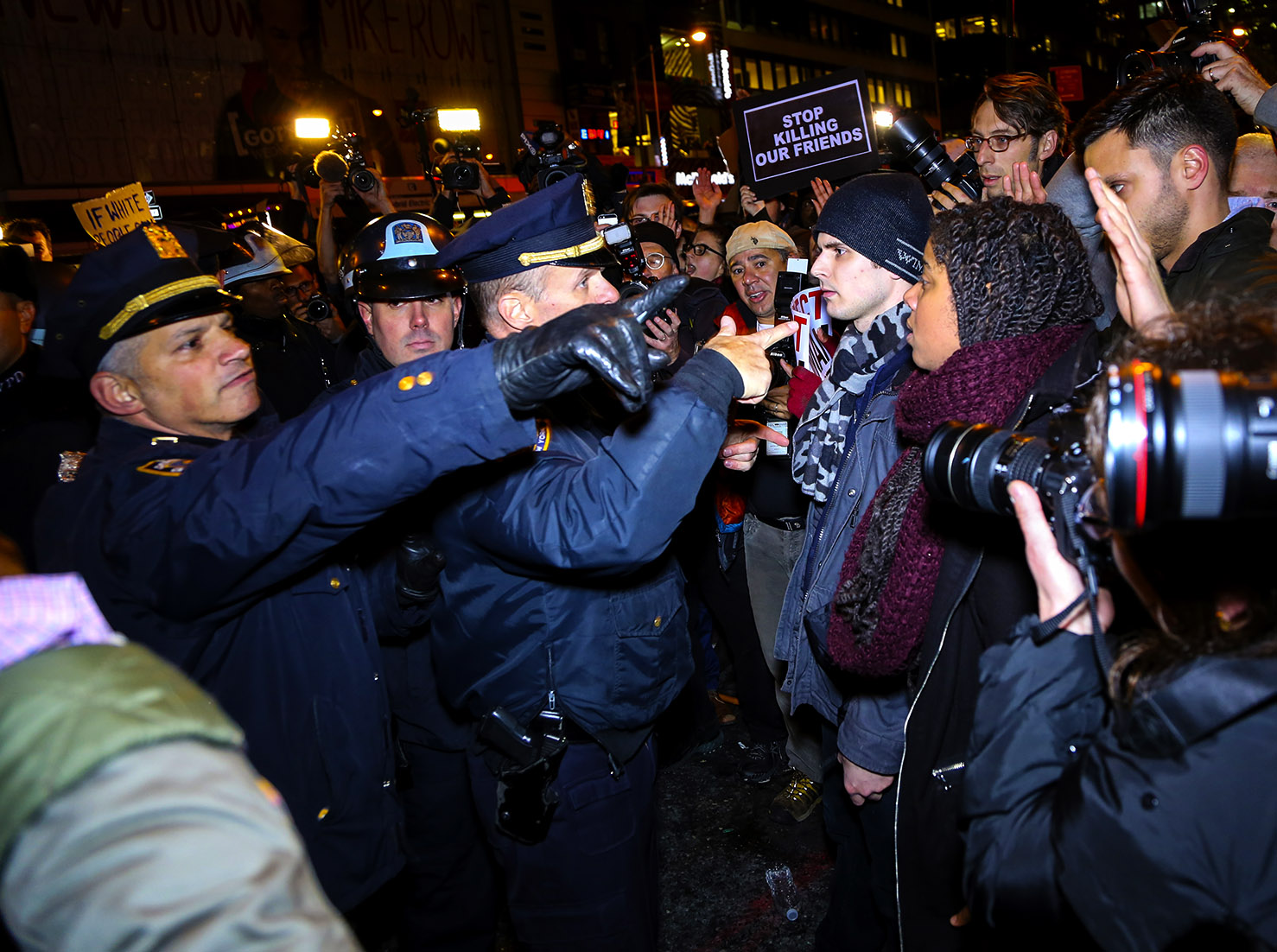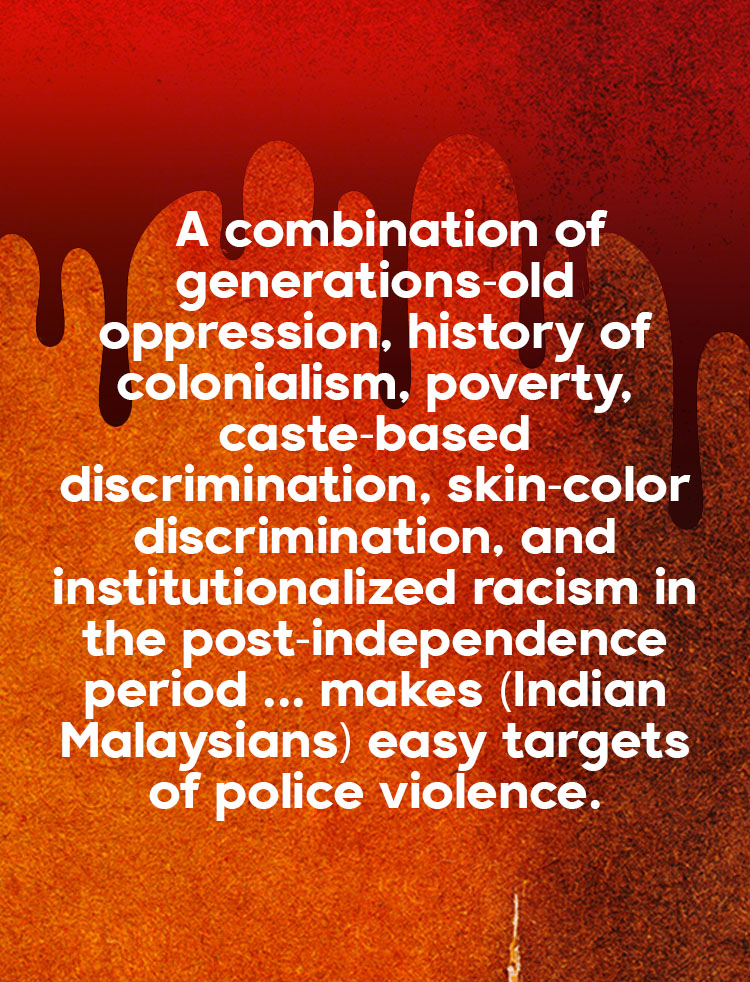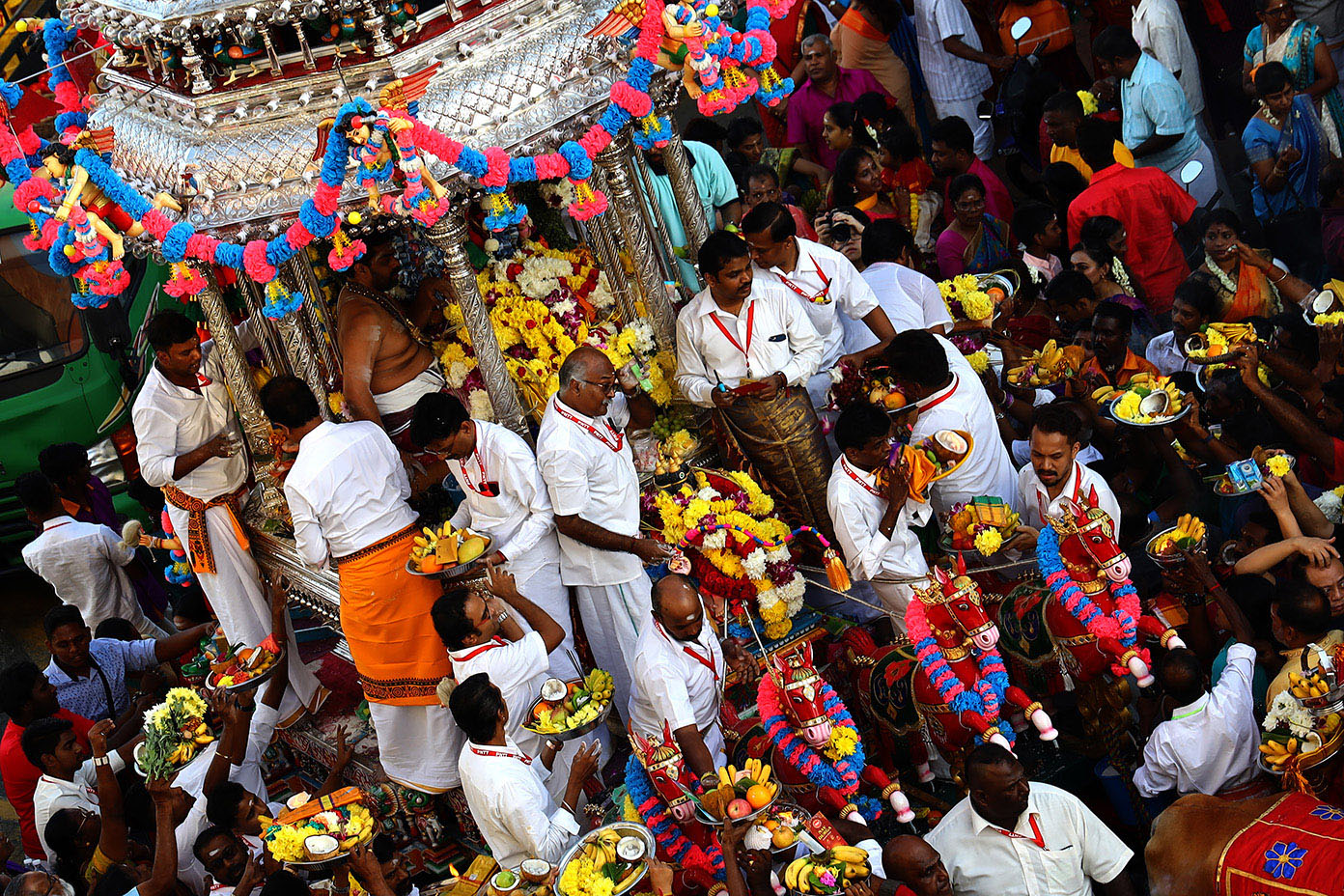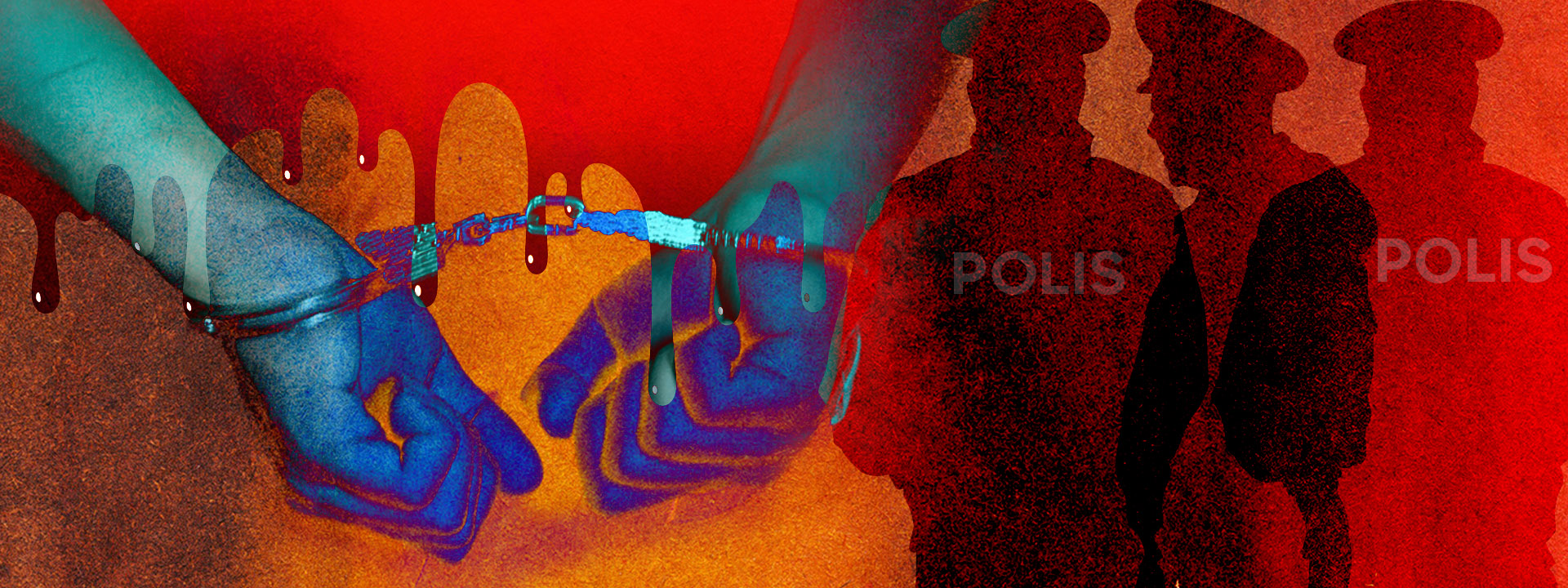On 24 February this year, a Tamil man was picked up by the Malaysian police for questioning on his brother’s alleged criminal activities. A. Ganapathy was held for 12 days, during which it is contended that he was the victim of police brutality. His family was denied visitation, even to give him medicine for existing health problems. He was taken to the hospital four times to receive treatment while he was in police custody. On his last visit, his injuries were so severe that doctors had to amputate his leg.
Ganapathy’s mother alleges that he was beaten with a rubber hose while in custody, a direct cause of the leg amputation he suffered. The Malaysian police originally denied that his death had anything to do with their treatment of him. However, growing public outrage and an independent autopsy report — which confirmed that he indeed died due to the injuries on his body — forced the police to launch an investigation on his death. But not before the chief of police insinuated that Ganapathy died because of his own underlying health issues, as opposed to police violence.
If all this sounds shockingly familiar, that’s because it bears a striking resemblance to deaths of Black people in the United States as a result of police brutality. Ganapathy’s case specifically brings to mind the murder of Eric Garner, a 43-year-old father of six, back in 2014. The police had initially confronted him for allegedly selling cigarettes illegally. Despite videos of Garner being killed by New York police, his weight and his health issues were instead blamed for his death.

Activists and New York City police officers face off in 2014 after a grand jury failed to indict police officer Daniel Pantaleo for the death of Eric Garner. Pantaleo held Garner in a chokehold, which led to Garner’s death. The incident caused many worldwide to examine their own incidences of police violence, including the death of A. Ganapathy in the hands of the Malaysian police.
The Black Lives Matter movement in the United States has inadvertently led to more societies grappling with their own issues of police violence, brutality, and deaths in custody. When it comes to Malaysia, the official numbers from the state say that 23 percent of those who die in police custody are ethnic Indian. This is already an alarming statistic, given that Indians make up only seven percent of the Malaysian population. The numbers, though, could be much higher. Only one in four deaths is actually reported and fewer than those become known to the public. Malaysian civil rights organization SUARAM (Suara Rakyat Malaysia) believes the number of deaths in police custody to be much higher, and that in reality, up to 55 percent of the people who die in custody are Indian.
Politics of race
Race and ethnicity are complicated in Malaysia. Currently, the racial makeup is 69.7 percent Malay, 22.5 percent Chinese, and 6.8 percent Indian. During British colonial rule from 1867 to 1957, Indians were brought to Malaysia by the British as coolie labor to work on rubber plantations. Their labor led to Malaysia being the world’s foremost exporter of rubber until 1980.

Ethnic Malays, who make up the majority of Malaysians, were unfortunately left out of the colonial economy. British divide-and-rule policies maintained the basic structures of Malay society in order to keep the country running with little upheaval. Part of this policy was to provide education only in Malay and English language; the Malays were taught in their native tongue while the Indians and Chinese were funneled into English education. This meant that as the colonial economy soared and English became the world lingua franca, only the Indians and Chinese could participate in it.
By the time of independence, there was a common belief that the ethnic Malays were economically and socially lagging behind other communities. A significant turning point was the incident more than half a century ago, on 13 May, which recorded racial violence between Malays and ethnic Chinese in Malaysia’s capital city, Kuala Lumpur. Hundreds of people were injured, and most of the dead were Chinese. The ruling Malaysian government proceeded to institute affirmative action policies, termed the New Economic Policy, in order to help Malays and quell racial tension. It was a rare moment in history where an ethnic majority became the recipient of such a policy.
The Chinese community, though not the beneficiary of affirmative action, already owned much of the Malaysian economy by the time of independence, which was one of the reasons for the racial riots. Even now, nine out of the 10 richest men in Malaysia are ethnic Chinese. They still own most of the private sector and wield immense power, to the point where they can institute discriminatory hiring policies against the ethnic Malays and Indians. This is repeated in the housing sector, which is, again, owned mostly by Chinese Malaysians. Their economic might permits them a say in Malaysia politics unlike any other minority.
Stuck between one group with political power and another with economic power are Indian Malaysians, who have access to neither of these. In Malaysia, 90 percent of all Indians are Tamil. They tend to be on either extreme of the socio-economic ladder. A small number belong to the upper caste and are rich, but the majority of Indians are mostly working-class descendants of Dalit and lower-caste indentured laborers brought to Malaysia during colonialism. Post-independence, these communities live in a cycle of poverty, alcoholism, and drug abuse. They are the poorest in the country, as half of all Indians are at the bottom of the income ladder. Indian-Hindus have seen hundreds of temples being demolished in a country that openly values Islam more. The rubber plantations they used to work on and still live in are called the “green ghettos” of Malaysia.
Favorite whipping boy?
This might explain why more Indians die in police custody than any other ethnicity in Malaysia. Their particular situation — a combination of generations-old oppression, history of colonialism, poverty, caste-based discrimination, skin-color discrimination, and institutionalized racism in the post-independence period — makes them easy targets of police violence. The police can get away with wielding immense power against Indians, and they do precisely that. The Indian community lacks the political or economic influence to make their demands politically costly to the ruling powers. Hence, there are no consequences for police brutality against the community.

Tamil Hindus in Penang celebrate the annual Thaipusam Festival in the Tamil month of Thai. Tamils make up 90 percent of Malaysia’s Indian population. The majority are working class descendants of Dalit and lower-caste indentured laborers and are among the country’s poorest citizens.
But there is a reckoning coming, albeit at a glacial speed. Activists and social justice commentators have been pushing Malaysians to speak more about police brutality in their own backyard. A movement called #justiceforganapathy has sprung up and the names of other Indian men who have mysteriously died in police custody have come up again on social media. The Malaysian Bar Council has called for an independent investigation into Ganapathy’s death, an important step in the process toward justice as Human Rights Watch had previously found that “investigations into police abuse are conducted primarily by the police themselves, lack transparency, and officers implicated in abuses are almost never prosecuted.”
There have been renewed calls for the formation of the Independent Police Complaints and Misconduct Commission, an independent civilian police oversight body. Multiple NGOs and human rights groups have spoken against excessive police presence at protests. All of this bodes a hopeful shift toward accountability for custodial deaths in Malaysia.
Police brutality and custodial deaths might seem to be an anomaly, but they are in fact built into the institutions of many states such as Malaysia. It is often the most vulnerable within these states who are the victims of police violence, both a symptom and a consequence of their powerlessness within that society at large. Activists all over the world would benefit from drawing these linkages and finding solidarity in the circumstances of others who are similarly targeted by the states they live under. Perhaps if we see police violence as a worldwide issue, instead of a singular one, we might be better equipped to dismantle it.●
Sangeetha Thanapal is a Singaporean social critic and activist who has roots in Malaysia. She is currently based in Australia.



















